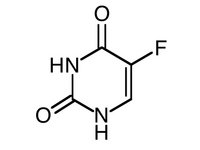Hauns B, Haring B, Kohler S, et al. Phytother Res 2001;15:34-38.
The aim of the study was to evaluate the efficacy, tolerability and quality of life in 5-fluorouracil (5-FU) pretreated colorectal cancer patients after combined 5-FU and Ginkgo biloba extract GBE 761 ONC (i.e. the Ginkgo biloba special extract EGb 761(R)) therapy. Following conventional 5-FU therapy, 44 patients (32 evaluable for response) with advanced progressive colorectal cancer were treated every 3 weeks with courses of 350 mg GBE 761 ONC as a 30 rain i.v. infusion on days 1-6 followed by 500 mg/m(2)/d 5-FU as a 30 min i.v. infusion on days 2-6. The response to therapy was evaluated after the second and fourth course of treatment. The data of 32 patients could be evaluated for efficacy. We observed a progression of disease in 22 patients, no change in 8 patients and a partial response in 2 patients (overall response = 6.3%). Seventeen of 22 patients with observed progressive disease showed further progression after two cycles, two after three cycles and three after four cycles. The median survival time was 9.5 months (7.7-11.5 months). GBE 761 ONC was well tolerated. Adverse events that occurred during the study were mainly myelosuppression and gastrointestinal symptoms and were judged to be 5-FU related or consistent with liver toxicity and thus tumour related. Our results suggest a good benefit-risk ratio of the combined 5-FU and GBE 761 ONC therapy as second line treatment in metastatic colorectal cancer. The survival time was similar to that known from second line treatment according to the Ardalan scheme. Since an improvement was observed in some patients despite the failure of the conventional 5-FU pretreatment, it would be interesting to evaluate whether the application of 5-FU plus GBE 761 ONC as a first line treatment is of benefit.
COPYRIGHT 2002 Thorne Research Inc.
COPYRIGHT 2002 Gale Group



